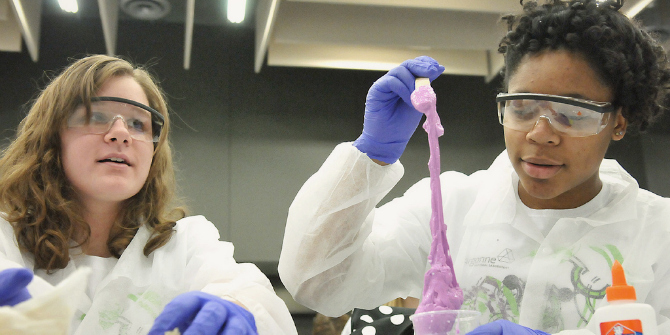 Why We Eat, How We Eat aims to map new terrain in thinking about the relationships between bodies and food. With the central premise that food is both symbolic and material, the volume explores the intersections of current critical debates regarding how individuals eat and why they eat. This fascinating book would be of interest not only to scholars in the social sciences and humanities interested in critical food studies, but to any reader interested in the social, cultural and political dimensions of food and eating practices, writes Deborah Lupton.
Why We Eat, How We Eat aims to map new terrain in thinking about the relationships between bodies and food. With the central premise that food is both symbolic and material, the volume explores the intersections of current critical debates regarding how individuals eat and why they eat. This fascinating book would be of interest not only to scholars in the social sciences and humanities interested in critical food studies, but to any reader interested in the social, cultural and political dimensions of food and eating practices, writes Deborah Lupton.
 Why We Eat, How We Eat: Contemporary Encounters between Foods and Bodies. Emma-Jayne Abbots and Anna Lavis (eds.). Ashgate. June 2013
Why We Eat, How We Eat: Contemporary Encounters between Foods and Bodies. Emma-Jayne Abbots and Anna Lavis (eds.). Ashgate. June 2013
In this age of food anxieties and constant reminders that food will makes us fat, diseased and unhappy, it is refreshing to read an academic book about food that addresses many other topics. Yes, some of the chapters deal with these aspects of food: this is inevitable given their contemporary cultural dominance in framing concepts of food and eating. But many others address other very different issues in an edited collection that, as the editors note in their introductory chapter, ‘take[s] account of the many networks and relations embedded in and performed by eating’ and asks ‘not what, but rather why and how, we eat’ (p. 1)
Why We Eat, How We Eat emerged from a multi-disciplinary conference that focused on a range of spatial, cultural and biological elements of bodies’ encounters with food. There is a strong socio-material flavour to the contributions to this book, an approach drawing on actor network theory to view food as an actor in heterogeneous relationships of human and nonhuman actors. Such an approach draws attention to the material dimensions of food and eating: not only how food is produced as a material object but the effects it has upon the fleshly body as it is consumed and incorporated. As several contributors contend, bodies and selves are entangled with eating and food production practices.
There are 13 substantive chapters, grouped into four sections, each of which ends with a shorter ‘interlude’ chapter in which a different scholar has been invited to comment on the chapters included in each group. I like the concept of these ‘interludes’. They serve a useful function in drawing out the connections between the chapters that have been gathered together, and thus help to alleviate the disjointedness and lack of coherence from which many edited collections suffer.
The contributors come from a range of backgrounds, including anthropology, feminist studies, cultural studies, critical weight studies and critical dietetics, sociology, political geography, with somewhat of a lean towards anthropology. As such, the chapters cover a multitude of cultural and geographical contexts, including in addition to countries of the global north, Japan, Bulgaria, Lebanon, Ecuador and Guatemala.
There is hardly a dull contribution in this collection, but I have only enough space here to discuss four chapters that particularly intrigued me. The first is Kaori O’Connor’s cross-cultural comparison of the use of seaweed in Wales, Japan and Japanese diaspora communities in Hawaii and North America. This comparison allows her to present insights into the situated meanings that adhere to the same foodstuff across geographical and historical contexts. O’Connor also introduces the concept of Blue politics (environmental politics related to marine and coastal places). As she observes, despite increasing concerns about the environment, ‘the Blue’ regions remain largely invisible in political discussions, legislation and policies.
The second chapter I am singling out for attention here presents findings from Anna Lavis’ study of English women undergoing treatment for anorexia nervosa and also of pro-anorexia websites. Lavis shows how her informants talk about their ‘not eating’ practices and identifies the emotions of fear, horror and disgust that food engenders in these women. Lavis’ analysis demonstrates that the simplistic assumption that people with anorexia ‘just want to look like fashion models’ completely misses the symbolic meanings that food holds for many of them. Food for these women is experienced as contaminating of the integrity of their bodies, and therefore as threatening. It is not as if they do not desire food, but the idea of it inside their bodies revolts them. As one informant said to Lavis: ‘I just don’t want [food] in me.’
Another chapter that I found particularly interesting, contributed by Emma-Jayne Abbots, addressed the experiences of North American migrants to Cuenca, Ecuador in search of a less industrialised and healthier lifestyle. These migrants, who are predominantly retired, have chosen to move to Ecuador as part of a risk-minimising strategy, attempting to reassert control over their food consumption practices in a place they consider to be a purer, more natural and cleaner environment than those they have left behind. However this ideal is confronted by what they consider the risk-laden spaces of food production and sale in their adopted country. Because these migrants are new to Cuenca and lack local knowledge and language skills, they find it difficult to know which food producers to trust and where to purchase their foods. Many of them therefore tend to eschew local markets (as ‘dirty’ and ‘dangerous’) and instead rely on a large supermarket chain they view as ‘sterile’ and ‘clean’, thus replicating food purchasing habits from their native countries.
Finally, Samantha Hurn’s ‘confessions of a vegan anthropologist’ recounts her fieldwork in Wales, conducting ethnographic research on foxhunting and farming. Hurn describes the rituals of the hunt, including the food that routinely consumed at the end of each outing: interesting details in themselves. She then goes on to reflect on the social repercussions of her veganism once it was revealed to the other hunt followers. Her analysis is further developed with reference to Foucauldian biopolitical theory, adapted to explore human and animal relationships. In so doing Hurn develops a ‘trans-politics’ that considers multi-species relations such as those between humans, dogs, foxes, horses and the dead flesh of animals (particularly sheep) that is eaten as part of the hunt ritual.
This fascinating book would be of interest not only to scholars in the social sciences and humanities interested in critical food studies, but to any reader interested in the social, cultural and political dimensions of food and eating practices.
————————
Deborah Lupton is a sociologist in the Department of Sociology and Social Policy at the University of Sydney. She is the author of 12 books, the latest of which are Medicine as Culture (2012, 3rd edition, Sage), Fat (2012, Routledge) and Risk (2nd edition, in press, Routledge). Her current research interests are parenting cultures; unborn and infant embodiment; fat bodies and obesity politics; the ethics of public health campaigns; and the use of digital technologies in health and medicine. Deborah blogs at This Sociological Life. Read more reviews by Deborah.








1 Comments